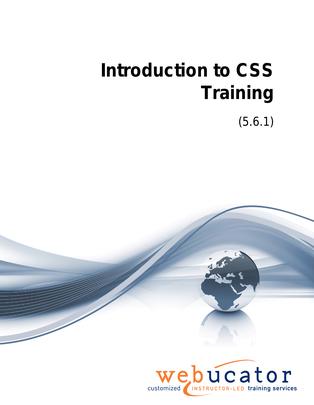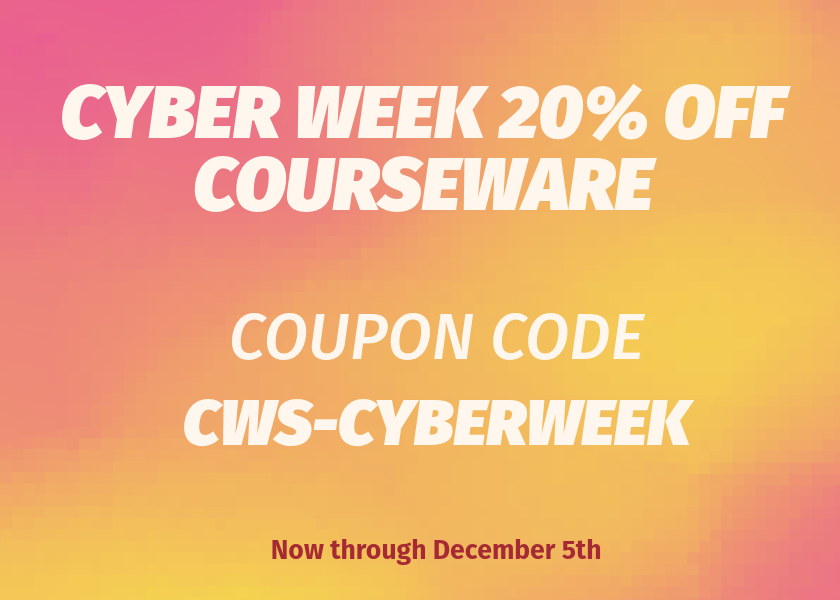
Introduction to CSS Training Courseware (CSS101)
This course provides learners with a comprehensive understanding of the essential concepts and techniques involved in using CSS to design modern, responsive, and visually appealing websites. The course begins with a crash course in CSS, followed by in-depth exploration of topics such as fonts, colors, text, borders, backgrounds, positioning, and more. The course also covers advanced CSS techniques like transforms, transitions, layouts, and media queries. With a strong emphasis on practical exercises and hands-on learning, students will gain valuable experience applying their new skills to real-world projects.
Benefits
- Visual Consistency: CSS ensures that the design of a website remains consistent across multiple pages, making it easier for users to navigate and interact with the site.
- Responsive Design: CSS allows for the creation of responsive designs that adapt to different devices and screen sizes, ensuring an optimal user experience for all visitors.
- Separation of Content and Presentation: CSS separates the visual presentation from the content, making it easier to maintain and update websites without affecting the underlying HTML structure.
- Efficiency: CSS reduces duplication of code, making websites faster to load and more efficient to maintain.
- Accessibility: By using CSS, web developers can create accessible websites that cater to users with disabilities, ensuring a more inclusive online experience.
- Customization: CSS allows for easy customization of website designs, enabling developers to create unique and personalized experiences for users.
- Browser Compatibility: CSS ensures that websites render correctly across different browsers, reducing the likelihood of display issues and improving the overall user experience.
PowerPoint Presentation
This course includes a PowerPoint presentation that maps to the manual and to the labs:
Full Lab Environment Add-On
Enhance and simplify your classes by providing an unparalleled learning platform that requires no setup. Your trainers and students can dive straight into a fully-prepared lab environment with just a click. This seamless integration means no time wasted on installations or configurations, allowing trainers and students to focus solely on the task at hand. The lab comes pre-loaded with all the necessary tools and resources, ensuring a smooth, hassle-free learning experience.

Outline
- Crash Course in CSS
- Benefits of Cascading Style Sheets
- CSS Rules
- CSS Comments
- Selectors
- Type Selectors
- Class Selectors
- ID Selectors
- Attribute Selectors
- The Universal Selector
- Grouping
- Combinators
- Descendant Combinators
- Child Combinators
- General Sibling Combinators
- Adjacent Sibling Combinators
- Precedence of Selectors
- How Browsers Style Pages
- CSS Resets
- CSS Normalizers
- External Stylesheets, Embedded Stylesheets, and Inline Styles
- External Stylesheets
- Embedded Stylesheets
- Inline Styles
- Exercise: Creating an External Stylesheet
- Exercise: Creating an Embedded Stylesheet
- Exercise: Adding Inline Styles
- <div> and <span>
- Exercise: Divs and Spans
- Media Types
- Units of Measurement
- Absolute vs. Relative Units
- Pixels
- Ems and Rems
- Percentages
- Other Units
- Inheritance
- The inherit Value
- CSS Fonts
- font-family
- Specifying by Font Name
- Specifying Font by Category
- @font-face
- Getting Fonts
- font-size
- Relative font-size Terms
- Best Practices
- font-style
- font-variant
- font-weight
- line-height
- font
- Exercise: Styling Fonts
- font-family
- Color and Opacity
- About Color and Opacity
- Color and Opacity Values
- Color Keywords
- RGB Hexadecimal Notation
- RGB Functional Notation
- HSL Functional Notation
- color
- opacity
- Exercise: Adding Color and Opacity to Text
- CSS Text
- letter-spacing
- text-align
- text-decoration
- text-indent
- text-shadow
- text-transform
- white-space
- word-break
- word-spacing
- Exercise: Text Properties
- Borders, Margins, and Padding
- The CSS Basic Box Model
- Introduction to using Google Chrome DevTools with CSS
- Padding
- Margin
- Border
- border-width
- border-style
- border-color
- border-radius
- box-sizing
- box-shadow
- Exercise: Borders, Margin, and Padding
- Backgrounds
- background-color
- background-image
- background-repeat
- overflow
- background-attachment
- background-position
- Keywords
- Coordinates
- Creating a "hint" Class
- background-size
- background-origin
- background-clip
- Modifying the "hint" Class
- background
- Exercise: Backgrounds
- Display and Visibility
- display
- visibility
- Pseudo-classes and Pseudo-elements
- Pseudo-classes
- Styling Links with Pseudo-classes
- Styling Tables and Articles with Pseudo-classes
- :nth-child()
- Pseudo-elements
- content
- Using Pseudo-elements
- Styling Tables with CSS
- A Review of HTML table Elements and Attributes
- Spanning Columns and Rows
- CSS Properties and Styling Tables
- table-layout
- border-collapse
- Exercise: Styling a Table Exercise
- A Review of HTML table Elements and Attributes
- Positioning
- Normal Flow
- position
- Positioning with top, bottom, left, and right
- z-index
- float and clear
- float
- clear
- float, clear, and ::after
- Exercise: Positioning
- Transforms and Transitions
- transition
- transition-property
- transition-duration
- transition-timing-function
- transition-delay
- transition
- transform
- Rotation
- Scale
- Skew
- Translate
- Exercise: Transforms and Transitions
- transition
- Layouts
- Introduction to Flexible Box Layout Module
- Some Flexbox Properties
- Introduction to Grid Layout
- Some Grid Properties
- Multi-column Layout
- Exercise: Layouts
- Introduction to Flexible Box Layout Module
- CSS Lists as Hierarchical Navigation
- Exercise: Basic Vertical Navigation Bars
- Dynamic Drop-down and Fly-out Navigation Bars
- Exercise: Basic Drop-down Menu
- Exercise: Basic Fly-out Menu
- Exercise: CSS List Menus
- Media Queries
- What Are Media Queries?
- Breakpoints
- Media Types
- Syntax
- Font Awesome
- Finding and Using Icons
- Exercise: Breakpoints
- Exercise: Targeting Print
- What Are Media Queries?
Required Prerequisites
- HTML
License
Length: 3
days | $105.00 per copy
Labs: Add-on available | $42.05 per lab
View Lab Details
What is Included?
- Student Manual
- Student Class Files
- PowerPoint Presentation
- Labs (optional add-on)
Courseware Tracks
This course is included in the following tracks:
